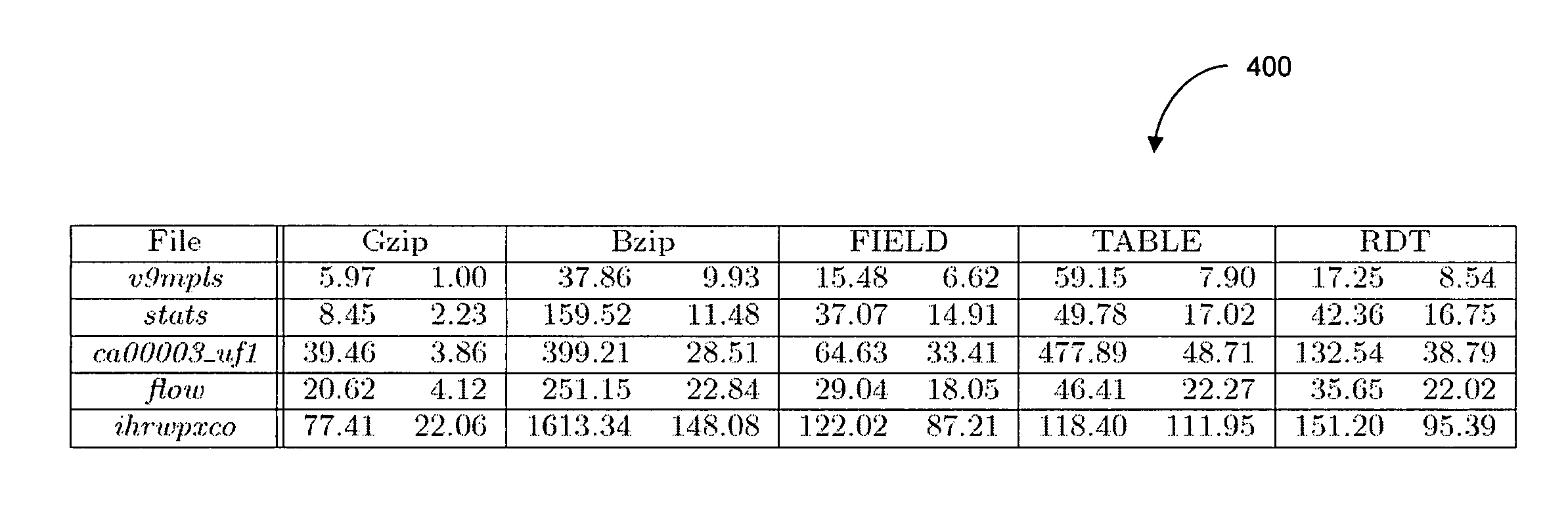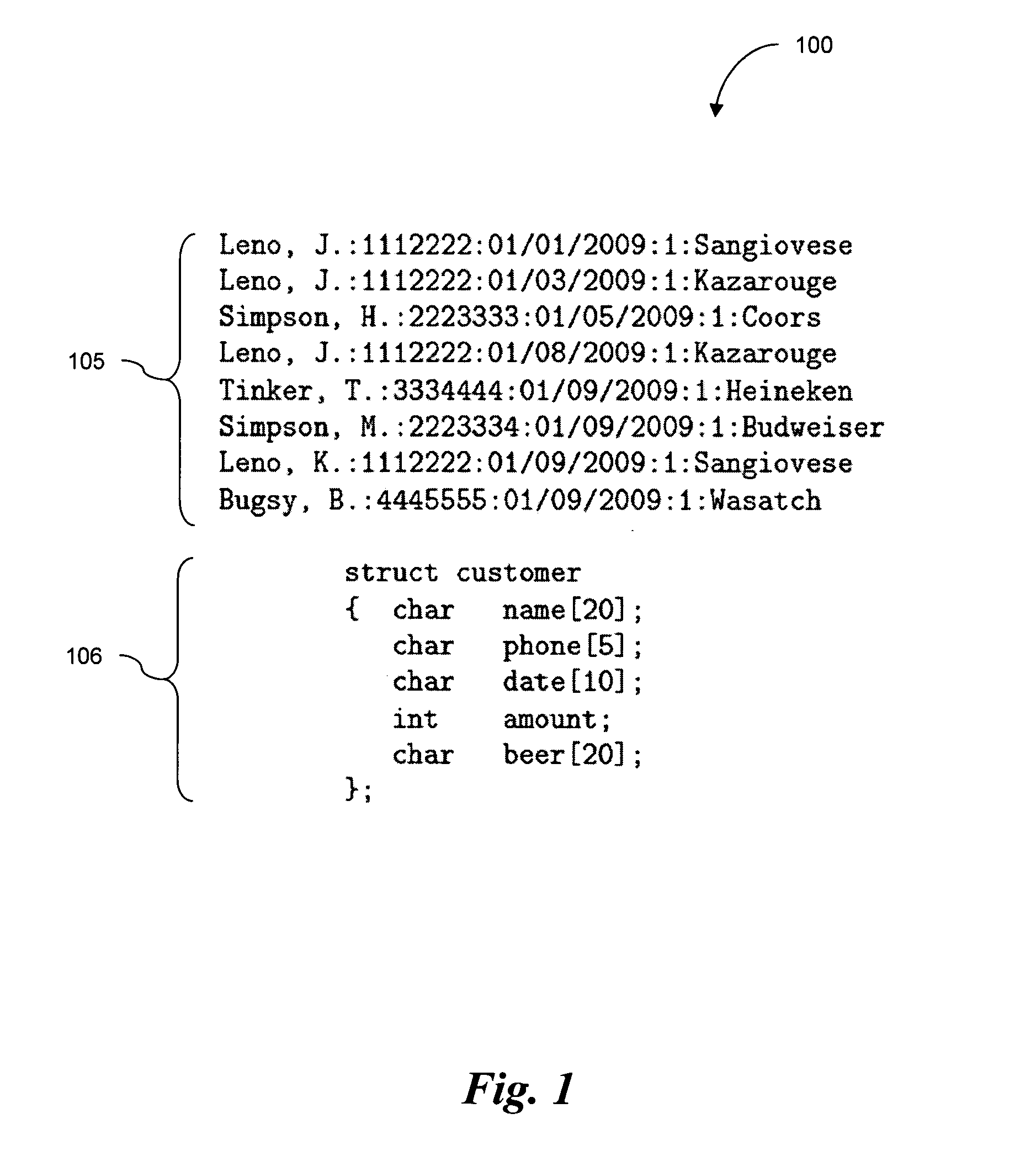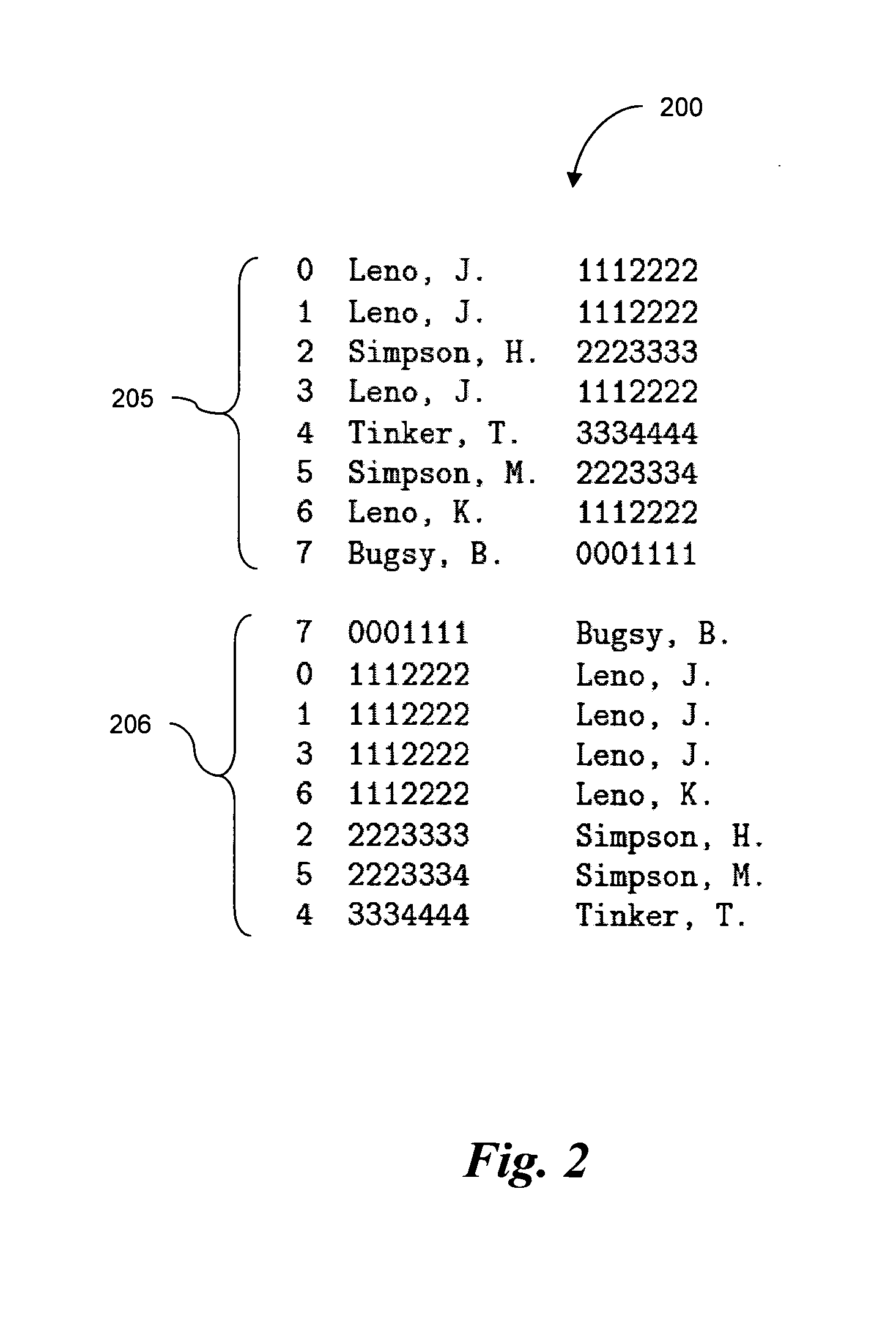Compressing massive relational data
- Summary
- Abstract
- Description
- Claims
- Application Information
AI Technical Summary
Benefits of technology
Problems solved by technology
Method used
Image
Examples
Embodiment Construction
[0021]In the present disclosure, the relational dependency transform is discussed. The relational dependency transform is a function to improve the compressibility of a relational data file by reordering its field values in an invertible way. Such a transform is a set of field dependency relations with strengths given by conditional compressive entropy, an information metric suitable for estimating the information content in a field as well as across fields. Experimental results based on large datasets taken from real information systems are presented to show the effectiveness of this compression approach.
[0022]Embodiments of the disclosure will be described with reference to the accompanying drawing figures wherein like numbers represent like elements throughout. Before embodiments of the disclosure are explained in detail, it is to be understood that the disclosure is not to be limited in its application to the details of the examples set forth in the following description and / or ...
PUM
 Login to View More
Login to View More Abstract
Description
Claims
Application Information
 Login to View More
Login to View More - R&D
- Intellectual Property
- Life Sciences
- Materials
- Tech Scout
- Unparalleled Data Quality
- Higher Quality Content
- 60% Fewer Hallucinations
Browse by: Latest US Patents, China's latest patents, Technical Efficacy Thesaurus, Application Domain, Technology Topic, Popular Technical Reports.
© 2025 PatSnap. All rights reserved.Legal|Privacy policy|Modern Slavery Act Transparency Statement|Sitemap|About US| Contact US: help@patsnap.com



